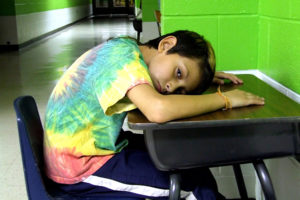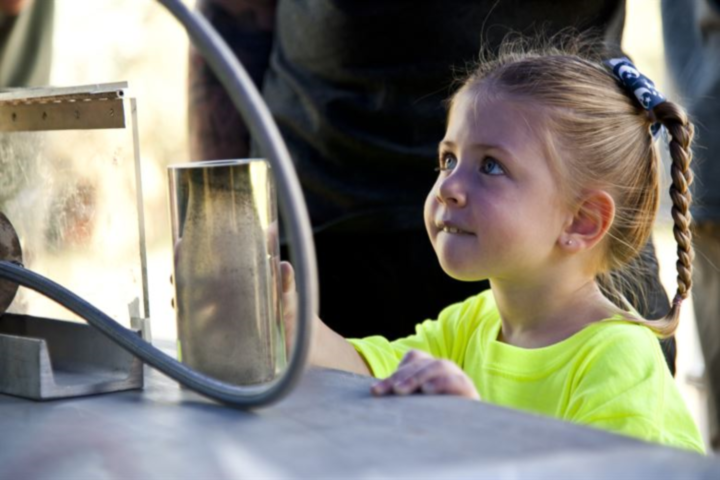A “26,000-square-foot intellectual oasis” opened in Gainesville, Florida in May after more than a decade of fundraising, and it aims to inspire visitors to “spark wonder, invent possible.”


A “26,000-square-foot intellectual oasis” opened in Gainesville, Florida in May after more than a decade of fundraising, and it aims to inspire visitors to “spark wonder, invent possible.”
About 100 visitors attended the grand opening of the Cade Museum for Creativity and Invention last month, the culmination of a 13-year, $9.2 million fundraising effort by the Cade Museum Foundation.
A tribute to Gatorade inventor and University of Florida medical professor Robert Cade, the sprawling two-story facility hosts exhibits like a working 160-year-old Gutenberg printing press, regular talks from leading scientists and inventers, and interactive facilities like a “Fab Lab” and “Creativity Lab” to inspire visitors to design and create.
“Our tagline is ‘spark wonder, invent possible,’ and I think we want people to come in, be curious and to walk out having learned something new or been inspired by something,” Stephanie Bailes, the museum’s executive director, told WUFT.
The museum’s mission is to “transform communities by inspiring and equipping the future inventors, entrepreneurs, and visionaries” with what it takes to develop great ideas, particularly those that blend art with science.
“We believe that great ideas happen when disciplines intersect in novel and exciting ways,” according to the museum website. “Many famous inventors are also musicians and artists, and report that their inspiration often comes when engaged in the arts.”
Robert Cade – a scientist, poet, musician and “collector of violins and Studebakers” – “exemplified joyful creativity with a purpose,” as did other noted inventors like scientist and accomplished violinist Albert Einstein, according to the site.
“Why is creativity our passion? Studies show that it is a better predictor of success and happiness in life than the intelligence quotient,” the website reads. “The good news is that everyone has creative potential and that creativity can be taught.”
“Our whole goal here is to help people find an inventive mindset. So maybe they don’t need to become a scientist or a researcher, but now that they’ve been sparked by going through the Cade museum they can eventually leave with that mindset and feel like, ‘maybe I can create something, or maybe I can do this,’ just changing their perspective,” Elizabeth Gist, the museum’s inventor coordinator, told WUFT.
Research from the Jubilee Centre for Character and Virtues identifies four distinct types of character: moral, civic, performance, and intellectual, and illustrates that teaching and modeling each is equally important to developing truly good people.
Hands-on learning experiences and creative spaces like the Cade Museum for Creativity and Invention help to nurture and support youngsters as they develop intellectual virtues like curiosity, critical thinking, reasoning and reflection.
Combined with other “building blocks of character” – moral, civic and performance virtues – the creative experiences contribute to a “practical wisdom,” which the Jubilee Centre describes as “the integrative virtue, developed through experience and critical reflection, which enables us to perceive, know, desire and act with good sense.”
The Jubilee Centre offers a lesson for educators to help foster creativity in the classroom that breaks down the virtues of learning, explains how the brain works, and discusses the impact of mindsets in the process.
The exercise prompts students “to think about the relationship between curiosity and learning” and “to develop a very clear picture of how continuous, lifelong learning will benefit them.”
Was this article helpful?
[ratings]